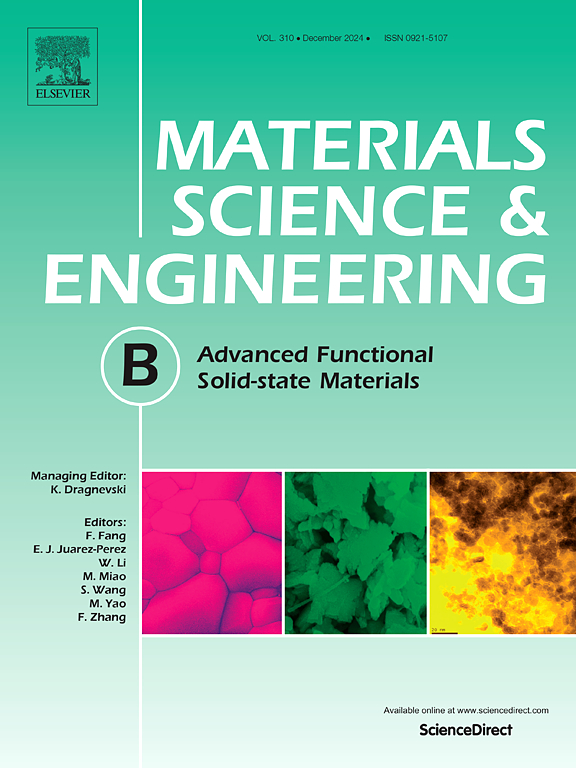用于DNA伏安传感的未掺杂或掺杂锌和锆基金属氧化物的研制
IF 3.9
3区 材料科学
Q2 MATERIALS SCIENCE, MULTIDISCIPLINARY
引用次数: 0
摘要
本研究采用溶胶-凝胶燃烧法合成了ZnO、Al-ZnO、Gd-ZnO、Gd-ZrO2和Cu-ZrO2等金属氧化物纳米颗粒(MONPs),并用x射线衍射(XRD)技术对其进行了表征。这些MONPs被用于修饰铅笔石墨电极(PGEs),并首次使用循环伏安法(CV)和差分脉冲伏安法(DPV)检测DNA,评估了它们对铁氰化物和鸟嘌呤信号增强的影响。Gd-ZnO修饰导致铁氰化物信号灵敏度增强(约24µA),而cu - zro2修饰电极的鸟嘌呤信号强度增加了近三倍。计算出cu - zro2修饰PGEs的检出限为20.8 ng/mL。开发的基于monp的一次性分析平台提供快速分析,3分钟用于铁氰化物测量,22分钟用于DNA监测。该系统中使用的金属氧化物纳米材料具有易于合成和低成本的优点,开发的系统具有低检测限和快速分析DNA传感的优点。本文章由计算机程序翻译,如有差异,请以英文原文为准。

Development of undoped or doped zinc and zirconium based metal oxides for voltammetric sensing of DNA
In this study, metal oxide nanoparticles (MONPs), specifically ZnO, Al-ZnO, Gd-ZnO, Gd-ZrO2, and Cu-ZrO2, were synthesized using the sol–gel combustion method and characterized by X-ray diffraction (XRD) technique. These MONPs were used to modify Pencil Graphite Electrodes (PGEs), and their effects on ferricyanide and guanine signal enhancement were evaluated using Cyclic Voltammetry (CV) and Differential Pulse Voltammetry (DPV) for DNA detection for the first time. Gd-ZnO modification resulted in enhanced ferricyanide signal sensitivity (approximately 24 µA), while Cu-ZrO2-modified electrodes showed an almost threefold increase in guanine signal intensity. The detection limit for Cu-ZrO2-modified PGEs was calculated as 20.8 ng/mL. The developed MONP-based single-use analysis platforms offer rapid analysis, with 3 min for ferricyanide measurements and 22 min for DNA monitoring. While the metal oxide nanomaterials used in the system offer easy synthesis and low cost, the developed systems provide low detection limits and rapid analysis for DNA sensing.
求助全文
通过发布文献求助,成功后即可免费获取论文全文。
去求助
来源期刊

Materials Science and Engineering: B
工程技术-材料科学:综合
CiteScore
5.60
自引率
2.80%
发文量
481
审稿时长
3.5 months
期刊介绍:
The journal provides an international medium for the publication of theoretical and experimental studies and reviews related to the electronic, electrochemical, ionic, magnetic, optical, and biosensing properties of solid state materials in bulk, thin film and particulate forms. Papers dealing with synthesis, processing, characterization, structure, physical properties and computational aspects of nano-crystalline, crystalline, amorphous and glassy forms of ceramics, semiconductors, layered insertion compounds, low-dimensional compounds and systems, fast-ion conductors, polymers and dielectrics are viewed as suitable for publication. Articles focused on nano-structured aspects of these advanced solid-state materials will also be considered suitable.
 求助内容:
求助内容: 应助结果提醒方式:
应助结果提醒方式:


